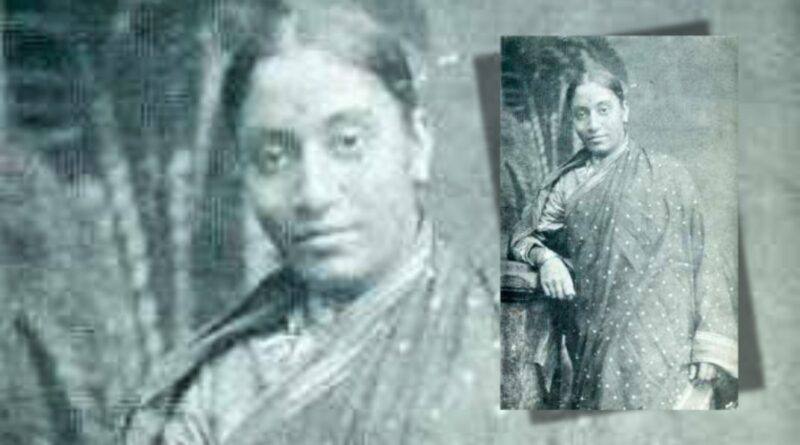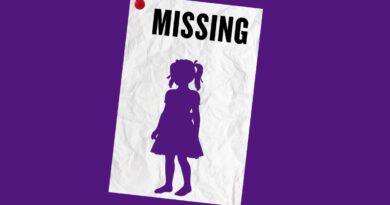Remarkable Story Of The First Indian Divorcee And Female Doctor
Rukhmabai Raut’s journey is a remarkable tale of resilience and transformation. Once a child bride, she defied societal norms to become India’s first divorcee and a pioneering female doctor. Her story highlights the struggles and triumphs of women in a changing society.
Rukhmabai Raut stands out as a figure who, had she garnered more recognition, could easily have become an icon for contemporary radical feminists. The conversation surrounding the first Hindu woman in India to legally secure a divorce remains insufficiently explored.
In 1885, Rukhmabai’s case emerged as a pivotal moment in Indian legal history. She bravely challenged an unwanted marriage and pursued a divorce, which ultimately resulted in Queen Victoria annulling her marriage. This significant event paved the way for two crucial legal reforms: the Age of Consent Act of 1891 and the eventual abolition of child marriage through legislation.
The renowned divorce case serves merely as an introduction to her remarkable life and significant contributions as one of India’s pioneering female doctors practicing Western medicine, a distinction that may have been held by Kadambini Ganguly before her.
It is noteworthy to consider how a young Indian woman in the patriarchal 19th century grasped the concept of consent and a woman’s autonomy in a manner that resonates with contemporary understanding.
She emerged as a trailblazer long before her era, playing a crucial role in the women’s liberation movement during pre-independence India. Her efforts significantly contributed to establishing the foundation for subsequent feminist movements in the nation.
In the formative years of life, significant events often shape one’s future. This period is marked by personal growth and the establishment of foundational relationships. Marriage, a pivotal milestone, typically follows this early phase, intertwining lives and setting the stage for shared experiences and challenges ahead.
Rukhmabai Bhimrao Raut, a notable figure in Indian history, was born in Mumbai on November 22, 1864. At the tender age of 14, her mother became a child bride, entering into marriage at a very young age. In a reflection of societal norms of the era, Rukhamabai entered into matrimony at the tender age of 11, joining Dadaji Bhikaji, who was 19 years old at the time. In a remarkable turn of events, she chose to remain at home, pursuing her education with the unwavering support of her stepfather.
In March 1884, following nine years of marriage, Dadaji made a request for his wife to reside with him. Rakhamabai declined the offer. The act of defiance culminated in the landmark Dadaji Bhikaji vs. Rukhmabai case in 1885, marking an unprecedented moment in Indian legal history when Dadaji initiated a lawsuit in the Bombay High Court.
A SIGNIFICANT DIVORCE CASE
Rukhmabai’s defiance of societal norms and her bold opposition to an arranged marriage ignited a legal confrontation that drew widespread public interest.
The matter concerning ‘Reinstating the Marital Right of Dadaji Bhikaji’ was initially presented to Justice Robert Hill Pinhe, who ultimately dismissed the case, asserting that Rakhamabai could not be compelled to maintain a marriage she had entered into as a minor.
Dadaji made an appeal, leading to a new hearing conducted by a panel of two judges. In a significant ruling delivered in March 1887, Justice Farhan sided with Dadaji, presenting Rakhamabai with a critical decision: she could either reunite with her husband or endure a six-month prison sentence.
Rukhmabai’s decision to embrace imprisonment has captured the attention of both national and international audiences. This bold move has ignited social unrest and highlighted the deep divisions within India, pitting orthodox beliefs against reformist ideals.
The battle for divorce she undertook transcended personal challenges, marking a pivotal moment in the evolution of women’s rights within India. She established a foundation that would influence future feminist movements in India.
Exploring the Intersection of Literature and Community Influence
The influence of her education was profound, enabling her to rally public support through her compelling writings. She recognised the influence of the written word and is unreserved in her application of it.
In a notable development, a new voice emerged in the literary landscape as a writer began contributing to The Times of India, adopting the pseudonym ‘A Hindu Lady.’ This event highlighted her intellect and advocacy skills while bringing to the forefront critical social issues, including gender equality, women’s rights, and the need for social reform.
Media portrayals emerged depicting Rukhmabai as a figure of education and refinement, contrasting sharply with her husband, who was characterised as illiterate and lacking in culture.
The case has attracted significant attention from notable figures and leaders in Mumbai and throughout India. The establishment of the ‘Rukhmabai Protection Committee,’ spearheaded by prominent figures such as Behramji Malbari and Ramabai Ranade, sought to garner public backing for Rukhmabai’s plight.
In Britain, there was a notable divergence of opinions. In a society divided over the case of Rukhmabai, opinions varied significantly. Some regarded her as a victim trapped in a mismatched union, while others contended that her educational background empowered her to defy Dadaji.
There are those who believe that Rukhmabai’s education played a significant role in the conflict, positing that it enabled her to recognise the disparities in her marriage. The case emerged as a contentious arena of differing perspectives, as Rukhmabai skilfully harnessed public sentiment to attain her freedom and uphold her dignity.
In a significant move, Rukhmabai garnered extensive backing from reformers and activists who acknowledged the critical role of women’s agency and autonomy. She subsequently appealed to the Privy Council in England, while Dadaji proposed to retract the case in exchange for compensation.
In a remarkable turn of events, her writings captured the attention of Queen Victoria, prompting the monarch to take personal action in the divorce case. The court acknowledged the unfair treatment endured by Rukhmabai and ultimately delivered a ruling in her favour.
In July 1888, a resolution was reached in the case, offering a measure of relief to Rukhmabai. The recent royal intervention has not only liberated Rukhmabai but has also established a significant precedent for women’s rights and legal safeguards against forced marriages.
The recent victory marked a significant moment in the ongoing struggle for justice, challenging entrenched patriarchal norms and serving as a source of inspiration for numerous women advocating for their rights.
Exploring the Intersection of Education and the Medical Profession
Following a reprieve in her divorce proceedings, Rukhmabai has returned to her fervour for education.
The choice to pursue studies at the London School of Medicine for Women marked a significant milestone, challenging traditional gender norms and setting a precedent for future generations of women aspiring to enter the medical profession.
In 1893, she completed her graduation and made her way back to India, where she took on the role of chief of the women’s hospital in Surat. Over the course of 35 years, she distinguished herself as the first Indian woman to practice western medicine.
Rukhmabai, known for her substantial contributions to social reform and women’s rights, found that her dedication to her medical career resulted in a lack of widespread acknowledgement.
Who Was India’s First Female Doctor To Practice Western Medicine?

India’s first female doctor to practice Western medicine was a pioneering figure in the field of healthcare. Her contributions marked a significant milestone in the history of medicine in the country, paving the way for future generations of women in medicine.
Confusion often surrounds the identity of India’s first female doctor to practice western medicine, with names such as Kadambini Ganguly, Anandibai Gopal Joshi, and Rukhmabai Raut frequently mentioned in discussions. Anandibai achieved her MB degree from the Women’s Medical College in Pennsylvania in 1886, while Kadambini completed her qualifications in India before pursuing further studies in England.
In a heartbreaking turn of events, Anandibai succumbed to tuberculosis in 1887, just after her return to India, preventing her from commencing her medical career. Kadambini holds the distinction of being the first woman in India to practice Western medicine as a doctor.
Why Rukhmabai’s Fight Against Child Marriage Was Different
Rukhmabai’s struggle against child marriage stands out for its unique approach and impact. Unlike many of her contemporaries, she not only challenged societal norms but also sought legal recourse to assert her rights. Her determination and resilience in the face of adversity highlighted the urgent need for reform in a deeply entrenched system. Rukhmabai’s story serves as a powerful reminder of the ongoing fight for women’s rights and the importance of education and empowerment in combating such practices.
Rukhmabai’s struggle against child marriage stands apart from the efforts of other social reformers in India during that era.
It is important to highlight that during that period, there was a lack of opposition to child marriage based on arguments like the “naïve age of the bride at the time of marriage”—a” key point raised by Rukhmabai in the court of Justice Farhan. This matter was regarded as inconsequential based on conventional perspectives.
In the midst of her legal battle concerning her own child marriage, she redirected her attention away from empirical arguments. These included assertions like “the body of a young girl cannot tolerate marital relations before physical maturity” and claims regarding her lack of intellectual competence to articulate her views at such a young age. In a remarkable departure from the norms of her era, she adopted a more feminist perspective.
In a poignant piece for The Times, a Hindu woman expressed her sorrow, stating, “The brutal custom of child marriage had deprived all happiness of my life.” The situation presents a significant obstacle in what I consider to be the two most crucial aspects of my life: my education and the development of my mind in alignment with my aspirations. Isolation has befallen me through no wrongdoing of my own. The aspiration to elevate oneself above countless uninformed peers has been met with scepticism and has drawn unwarranted criticism.
Rukhmabai’s position redirected attention from mere physical immaturity to the wider implications of child marriage, highlighting a pivotal feminist viewpoint. In a recent court session, Rukhmabai presented a compelling case against the practice of marrying off young girls, highlighting the negative impact such early unions have on their education and mental growth.
Her opposition arose from a commitment to preserving women’s freedom and dignity, going beyond simple empirical arguments. She brought attention to the injustice of child marriage, a practice that robbed her of happiness and obstructed her dreams for personal development.
In a striking contrast to their male counterparts, Rukhmabai’s protest emerged as a profoundly personal endeavour, embodying her enduring fight for survival and independence throughout her life. In a groundbreaking move, she introduced the idea of ‘woman’s space’ in India, championing the cause of women’s rights and identity within a society marked by deep-rooted patriarchy.
LEGACY AND INSPIRATION
In a time when phrases such as ‘woman’s freedom’ and ‘woman’s dignity’ were largely absent from discourse, Rukhmabai Raut courageously set out to advocate for these principles. In a bold move, she took on societal norms, igniting discussions surrounding women’s rights in decision-making processes, especially in relation to child marriage and the appropriate age for marriage.
Despite her death in 1955, her influence continues to resonate deeply. The transformation of a child bride into a trailblazing female physician serves as a powerful testament to the potential of one person’s journey to ignite change and motivate future generations.
Rukhmabai’s struggle for independence and the rights of women stands as a remarkable chapter in history.
Her unwavering decision to reject societal expectations and her commitment to living life according to her own principles resulted in Queen Victoria ending her marriage, establishing a significant milestone in the movement for women’s rights.





